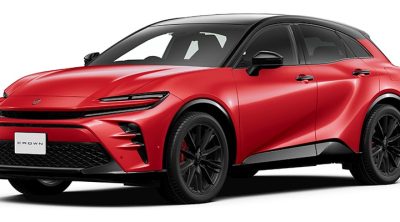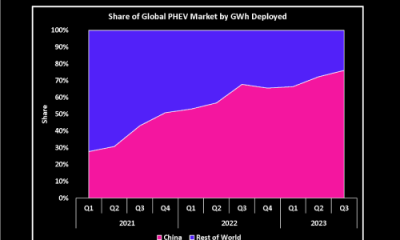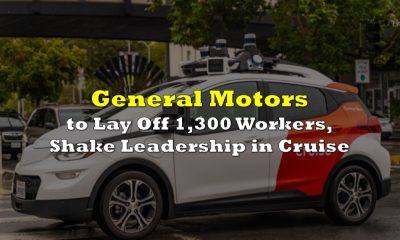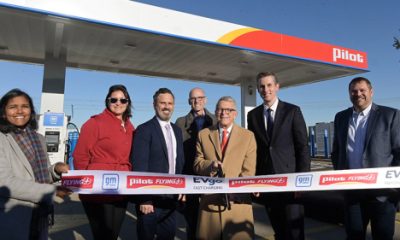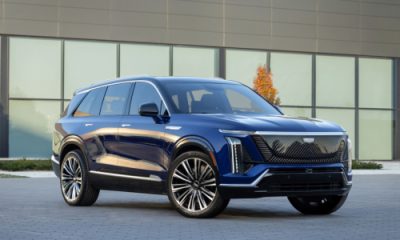Energy & Critical Metals
S&P Global Mobility survey finds EV affordability tops charging and range concerns in slowing EV demand
Although battery-electric vehicles are getting closer to price parity with their internal combustion siblings, the affordability factor is the main reason…

Although battery-electric vehicles are getting closer to price parity with their internal combustion siblings, the affordability factor is the main reason consumers are holding back on adopting electrification, according to a recent survey by S&P Global Mobility.
Pricing is still very much the biggest barrier to electric vehicles. Almost half (48%) of the 7,500 respondents globally consider EV prices to be too high, even though they understand that most EVs inherently carry a price premium.
Consumer sentiment toward buying an EV has cooled considerably over the last two years. This rise and fall are characteristic of an immature market segment, said Yanina Mills, senior technical research analyst at S&P Global Mobility. That said, improved electric vehicle range, and the increased number of model choices, have moved down consumers’ list of reasons to avoid purchasing an EV.
Despite an increased number of EVs available, and improved consumer awareness of tax-credits and benefits, fewer than half of respondents believe the EV technology is ready for mass market adoption. Only 42% of respondents are considering an EV for their next vehicle purchase and 62% of respondents are waiting until the technology improves before purchasing a new vehicle, the S&P Global Mobility survey found.
Initially, consumer interest was smothered by the limited variety of available EV models. Just 58% of 2019 S&P Global Mobility survey respondents were open to purchasing an EV, as luxury-priced models dominated the early EV market. Just a handful of mainstream models, like the Chevrolet Bolt, Nissan Leaf, and Tesla Model 3, were available at that time.
The year 2021 saw a dramatic burst of consumer EV acceptance. Buyer willingness soared, with 86% of global respondents being open to acquire an EV. New mainstream models from Ford, Hyundai, Kia, and Volkswagen hit the market. The pro-EV push in the US by the Biden administration, and legislation in multiple US states and in Europe banning future internal combustion-engine (ICE) vehicles, further heightened visibility.
While 67% of the 8,000 participants surveyed in May 2023 were open to the idea of purchasing an EV—certainly higher than in 2019—it marks a 19 percentage point decline from 2021.
According to S&P Global, the last two years have brought more consumer choice. These span the far ends of the market, from EV pickups in the US to many small EV choices becoming available in Europe and China.
Price fatigue has set in, driven by rising interest rates and inventory shortages that have only recently seen relief, said Brian Rhodes, director of connected car and vehicle experience for S&P Global Mobility.
Depending on where an EV is manufactured, changes to the tax-credit program in the US now force consumers to lease—rather than purchase—many models. Frequent media reports about charging network reliability shortcomings have not helped either. At this point in the evolution of EVs, adding more models simply cannot cancel out these issues, S&P Global observed.
Owning an EV forces some changes in routine. Compared to an ICE vehicle, EV driving range is typically less. Once the battery charge is depleted, it takes longer to recharge a battery than it does to refuel a gas tank. Inherent EV drawbacks such as these make consumers reluctant to buy, especially those regularly making long journeys. However, survey results show that consumers accept living with an EV’s concessions relative to an ICE vehicle post-purchase.
That said, many EVs purchased to date are second—often smaller—cars in the household.
For those considering an EV as their primary car, the range/charging issues are amplified since there is no alternative on longer trips.
—Brian Rhodes
The charging network. Charging concerns are second only to vehicle cost among reasons cited for those respondents against buying an EV. About 46% of respondents are concerned about the time required for charging, while 44% are concerned about the availability of charging stations—a reversal of reasons from last year.
The plurality of 2023 survey respondents said they were willing to wait between 30 minutes and an hour to recharge.
Meeting this charging expectation requires both infrastructure investment and vehicle capability. The only current technology that can support 30-to-60-minute recharging is fast (DC) charging, so an extensive fast charger network becomes necessary to match consumer demands. An industry-wide shift towards using Tesla’s previously proprietary NACS charging design should accelerate charging network availability if installation rates keep up with sales.
Likewise, EVs need to have high-capacity built-in chargers that can take full advantage of fast chargers. For example, several Hyundai, Kia, and Genesis vehicles have 350kw/800V charging that can charge a battery from 10% to 80% in 18 minutes—assuming the charging location is operating properly.
As for the concept of battery swapping, consumers in mainland China, India, and Brazil continue to be most interested in the concept, with more than 75% of global respondents willing to wait up to 30 minutes for a battery swap, at an average price point of $16.
Home charging. One common complaint against widespread electric vehicle adoption (either battery-electric, or plug-in hybrid) is that charging is difficult for owners who don’t live in houses and thus, don’t have a charger on-site. But survey results reveal that this concern may be overstated.
Respondents confirmed that the most common—and best—single place and time to recharge is indeed at home, at night. However, only 42% of owners typically charge their electric vehicle this way. Furthermore, just 51% of current and repeat EV owners have a charger installed at home. While the industry’s common refrain is, “Most owners will recharge at home,” barely half of the early adopters surveyed met that circumstance.
Owners charge their vehicles in a wide variety of places, including streets, highways, and during work. Among EV intenders, 25% plan to use public charging stations (15%).
Owners who do charge at home aren’t in a hurry. Most respondents aren’t willing to pay anything extra (31% of respondents), or are willing to pay a minimal 10% extra (40% of respondents), to upgrade to a faster Level 2 charger that takes five hours for a full charge. Consumers want fast charging on the road, but they will wait overnight for a full charge at home.
Range anxiety. Competing manufacturers have driven something of an EV “range war,” particularly within the luxury segment. The longest-range Tesla Model S claims 405 miles of range, while the Lucid Air Grand Touring promotes 516 miles. These luxury vehicles push the envelope in both range and price—the Lucid stickers at nearly $126,000—but most consumers have more modest needs and wants.
Most respondents indicated that they would accept a minimum EV range below 300 miles. 19% would accept a range between 251 and 300 miles, while 21% would be fine with a range from 201 to 250 miles. Only 29% preferred a minimum range above 300 miles.
Current EV range capabilities match this consumer demand. Almost every EV on the market has a United States Environmental Protection Agency (EPA) range of more than 200 miles. Vehicles with an estimated range over 300 miles are limited to vehicles from luxury brands, such as Lucid, Tesla, Rivian, BMW, and Mercedes-Benz.
While current technology might be ready for consumer acceptance, it does not mean that consumers are ready just yet to make the leap to an EV. 62% of respondents agreed with the statement, “I am waiting until vehicle technology improves before purchasing a new car.”
EV purchase reasons remain consistent. Consumer willingness to buy an EV has waxed and waned over the last few years, but their reasons for purchase remain the same. The three main reasons to purchase an EV or hybrid are fuel savings (69%), environmental benefits (56%), and performance/driving experience (31%).
Electric vehicle advocates, including the EPA, often tout downstream cost savings as a reason to purchase an EV. Many buyers will indeed save money on operating costs, but the equation is more complex. But buyers in coastal US states—where the vast majority of EVs are purchased in that market—also suffer from high electricity costs, increasing the cost of operation for charging at home.
Meanwhile, while some free Level 2 chargers are available, charging at a fast DC charger is far from free. Among global respondents, those in the United States and Brazil were the most willing to pay for 10 minutes (60 miles of range) of fast charging, both at $19. For most ICE vehicles, this is more expensive than the gasoline needed to drive that distance.
A desire to reduce greenhouse emissions drives many consumers to purchase an EV. This goal also encourages the replacement of fossil fuel burning consumer goods – including heating/cooling systems and outdoor garden equipment – with their electric-powered equivalents. But all of this comes at a cost, both at purchase and for recharging. Says Mills, “All-electric everything doesn’t seem to be achievable for a lot of consumers.”
Multiple hurdles need to be cleared to achieve widespread EV adoption. Buyers may want to wait for the next technological advance, or have concerns about charging time and charger availability, but in the end, consumer finances—not engineering—lead the current buying resistance to EVs, according to S&P Global Mobility.
S&P Global Mobility is a division of S&P Global, the foremost provider of credit ratings, benchmarks, analytics and workflow solutions in the global capital, commodity, and automotive markets.

Uranium Exploration Company Announces Additional Staking in the Athabasca Basin
Source: Streetwise Reports 12/22/2023
Skyharbour Resources Ltd. announced an update from its Canada-based Falcon Project along with additional…
Tesla Launches New Mega Factory Project In Shanghai, Designed To Manufacture 10,000 Megapacks Per Year
Tesla Launches New Mega Factory Project In Shanghai, Designed To Manufacture 10,000 Megapacks Per Year
Tesla has launched a new mega factory…
Giving thanks and taking stock after “a remarkable year”
An end-of-year thank you to our readers, industry colleagues and advertisers before Electric Autonomy breaks from publishing until Jan. 2
The post Giving…



